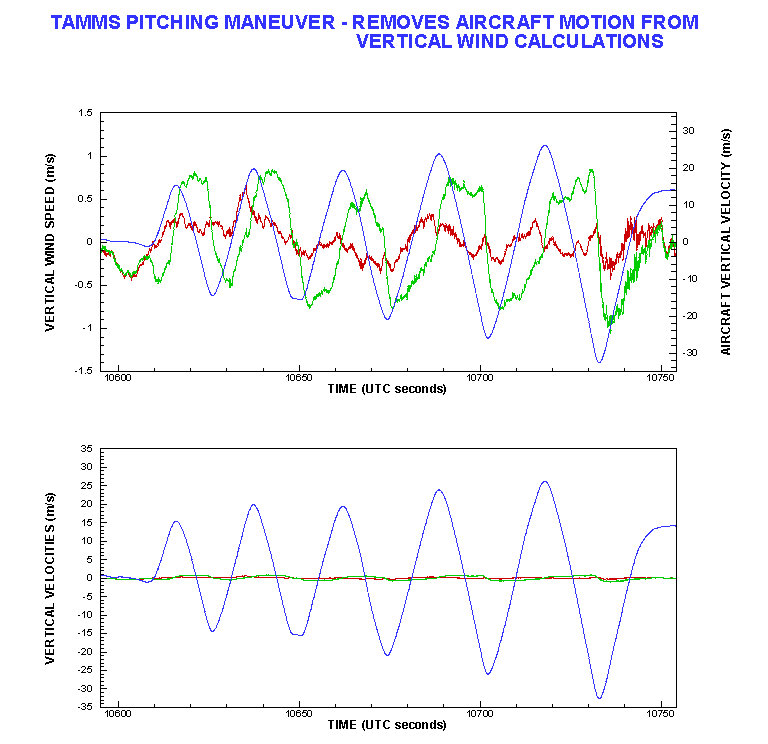

Example of the TAMMS data quality. This maneuver, performed during TRACE P (2001) shows the ability to remove the effects of aircraft motion from the calculation of the vertical wind speed. In addition, the derived vertical winds are within the 10% threshold for accurate vertical winds Lenschow (1986)
| Measurements are sampled at 50hz and averaged to 20hz for noise filtering | |
| End products include fast response measurements of the 3-D wind field, temperature, absolute humidity, and chemical constituents (CO2, SO2, and O3) | |
| Produces eddy correlation fluxes of latent and specific heat (w'q' and w'q') and chemical transport (w'CO2', w'SO2', and w'O3') | |
| Sensors are currently on-board the NASA's P3-B aircraft, housed at the NASA Wallops Flight Facility (Wallops Island, VA) |
Has participated in the following Global
Tropospheric Experiments (GTE):
| |||||||||
| Participating in the spin up of NASA's Pilot Coastal Study of CO2 fluxes |
| NASA Langley Research Center - CO2 | |
| NASA Langley Research Center - O3 | |
| Drexel University - SO2 |
Several models of the TAMMS system have been flown on various NASA field missions. The data is managed by the Global Tropospheric Experiment project office and is available from NASA/Langley for the following missions:
| GTE ABLE 3A & 3B | |
| GTE PEM Tropics A | |
| GTE PEM Tropics B | |
| GTE TRACE P |
![]()
Responsible NASA Official(TAMMS): Bruce Anderson
Curator(TAMMS): Lee Thornhill